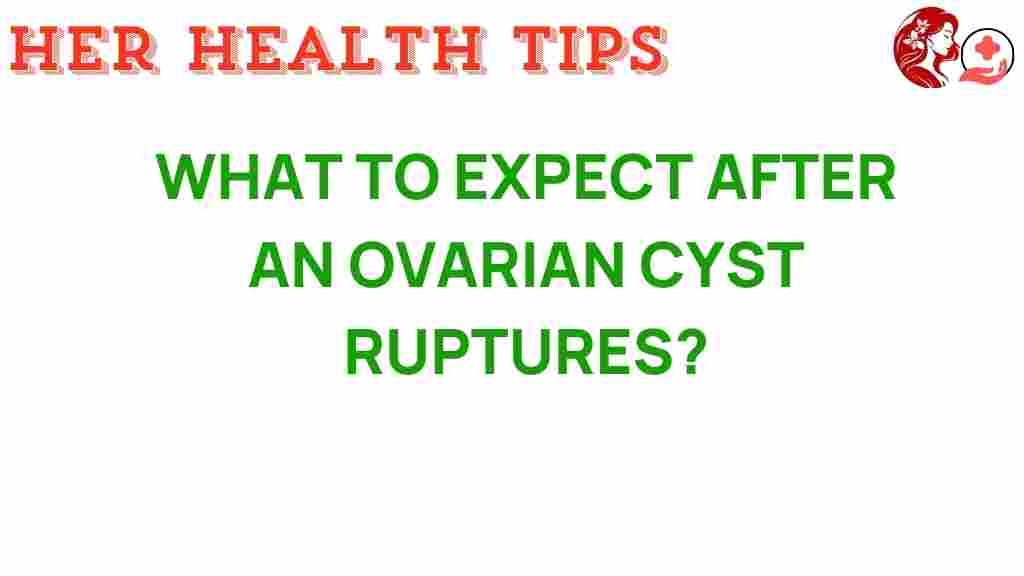Understanding Ovarian Cyst Ruptures: What You Need to Know
Ovarian cysts are fluid-filled sacs that develop on the ovaries and are often a common occurrence in women of reproductive age. While many ovarian cysts are harmless and may not cause any symptoms, some can lead to complications, including rupture. Understanding the implications of an ovarian cyst rupture is crucial for women’s health. In this article, we will explore the symptoms, diagnosis, recovery, pain management, and the importance of awareness surrounding this condition.
What is an Ovarian Cyst?
An ovarian cyst is a fluid-filled sac that forms on or inside an ovary. They are typically benign and can vary in size. There are several types of ovarian cysts, including:
- Functional Cysts: These are the most common type, occurring during the menstrual cycle.
- Dermoid Cysts: These contain tissue such as hair, skin, or teeth.
- Cystadenomas: These develop from ovarian tissue and can be filled with a watery or mucous-like fluid.
- Endometriomas: These are associated with endometriosis and contain tissue similar to the uterine lining.
What Causes Ovarian Cysts to Form?
The exact cause of ovarian cysts is not always clear, but they can develop due to hormonal changes, especially during the menstrual cycle. Other factors may include:
- Hormonal imbalances.
- Pregnancy.
- Pelvic infections.
- Endometriosis.
Symptoms of Ovarian Cyst Rupture
When an ovarian cyst ruptures, it can lead to a variety of symptoms that may range from mild discomfort to severe pain. Common symptoms of an ovarian cyst rupture include:
- Sudden, severe abdominal pain: This is often the most noticeable symptom and can occur on one side of the abdomen.
- Pelvic pain: Women may experience pain in the pelvic region.
- Nausea and vomiting: Some may feel nauseated or vomit due to pain or discomfort.
- Lightheadedness or fainting: This can occur if the rupture causes significant internal bleeding.
- Bloating: Women may feel bloated or experience a swollen abdomen.
When to Seek Medical Attention
It’s crucial to seek immediate medical attention if you experience:
- Severe abdominal pain.
- Signs of internal bleeding such as fainting or severe dizziness.
- Fever or chills alongside abdominal pain.
Diagnosis of Ovarian Cyst Rupture
To diagnose an ovarian cyst rupture, healthcare providers typically perform several evaluations, including:
- Physical Examination: A healthcare provider will assess your symptoms and perform a pelvic exam.
- Ultrasound: This imaging test can help visualize the cyst and any fluid in the abdominal cavity.
- Blood Tests: Blood tests can help determine if there is internal bleeding or other complications.
Imaging Techniques
In some cases, healthcare providers may use additional imaging techniques, such as:
- CT Scan: This can provide a more detailed view of the abdominal organs.
- MRI: This may be used in certain cases to assess the structure of the cyst.
Recovery from an Ovarian Cyst Rupture
The recovery process after an ovarian cyst rupture varies depending on the severity of the rupture and whether any surgical intervention is required. Here’s what you need to know about the recovery process:
At-Home Care
For mild cases, recovery may involve:
- Rest: Allow your body time to heal.
- Hydration: Drink plenty of fluids to stay hydrated.
- Heat Therapy: Applying a heating pad to the abdomen can help alleviate pain.
Medical Treatment
If the rupture is severe or if you experience significant pain, healthcare providers may recommend:
- Pain Management: Over-the-counter pain relievers such as ibuprofen or acetaminophen.
- Surgery: In cases of excessive bleeding or large cysts, surgical intervention may be necessary.
Follow-Up Care
It’s important to follow up with your healthcare provider after a rupture to monitor your recovery and check for potential complications. Regular check-ups can ensure that any new cysts or issues are addressed promptly.
Pain Management Strategies
Managing pain during recovery from an ovarian cyst rupture can be challenging. Here are some effective strategies:
- Over-the-Counter Medications: Nonsteroidal anti-inflammatory drugs (NSAIDs) can help reduce pain and inflammation.
- Heat Therapy: As mentioned, applying heat can soothe abdominal discomfort.
- Relaxation Techniques: Practices such as deep breathing, meditation, and gentle yoga can help manage pain levels.
- Physical Activity: Light activities, as recommended by your healthcare provider, can promote healing.
Avoiding Complications
While many women recover from an ovarian cyst rupture without complications, it is essential to be aware of signs that may indicate a more serious problem. Always consult with a healthcare provider if you notice:
- Persistent or worsening abdominal pain.
- Signs of infection, such as fever or chills.
- Persistent nausea or vomiting.
Awareness and Education: Women’s Health
Raising awareness about ovarian cysts and their potential complications is vital for women’s health. Understanding your body and recognizing the symptoms of a potential rupture can lead to quicker diagnosis and treatment, reducing the risk of severe complications.
Women should engage in regular health check-ups and discussions with their healthcare providers about any concerns regarding reproductive health. For more information on women’s health, consider visiting the Office on Women’s Health.
Conclusion
Understanding ovarian cysts and the implications of a rupture is essential for women’s health. By being aware of the symptoms, seeking timely medical attention, and engaging in effective recovery and pain management strategies, women can navigate this condition more effectively. Always consult with healthcare providers for personalized advice and treatment options tailored to your individual health needs.
Stay informed and proactive about your health, and don’t hesitate to reach out for support when needed. Remember, awareness is the first step towards better health outcomes.
This article is in the category Reproductive and created by HerHealthTips Team
